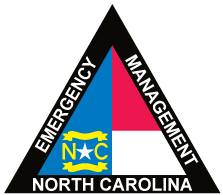
Emergency Management
 The Emergency Services Department coordinates local, State and Federal resources to expedite response and recovery from man-made and natural disasters. The Department plans for the four phases of Emergency Management which include mitigation, preparation, response and recovery to all types of disasters and emergencies.
The Emergency Services Department coordinates local, State and Federal resources to expedite response and recovery from man-made and natural disasters. The Department plans for the four phases of Emergency Management which include mitigation, preparation, response and recovery to all types of disasters and emergencies.
Resources
- Greene County Emergency Operations Plan
- Neuse River Basin – Regional Hazard Mitigation Plan
- 2019 Novel Coronavirus Factsheet
- 2019 FEMA Forms
- Hurricanes: A Preparedness Guide
- Family Disaster Plan
- Family Disaster Supply Kit
- Special Needs Disaster Plan
- Special Needs Registry Application
- Preparing Your Pets for Emergencies
Local Emergency Planning Committee (LEPC)
The Greene County Local Emergency Planning Committee (LEPC) is a federally mandated committee with membership from business and industry; emergency response groups such as fire, medical and law enforcement; community groups; media; hospitals; environmental interest; and the general public. The mission of the LEPC is to effectively plan for emergencies involving hazardous materials. The LEPC is tasked with the responsibility for SARA Title III Environmental Compliance; HAZMAT training and exercises; Site-Specific Chemical Planning Program; coordination of chemical information to emergency responders; and maintenance of the county-wide emergency response plan.
The primary responsibility of the LEPC is to receive information about hazardous substances from industry and to use this information to develop comprehensive site emergency plans to handle emergencies. It is also responsible for establishing procedures and programs which make it easy for citizens to understand and have access to the information that industry submits.
The LEPC can assist you in obtaining chemical related information from industry in your neighborhood. Federal law requires LEPCs to establish procedures for receiving and processing requests from the public for information. Greene County Emergency Services has been designated as the official agency to serve as coordinator of this information. You may contact the Emergency Services Department for additional information.
Emergency Planning and Community Right-to-Know Act (EPCRA)
The Emergency Planning and Community Right-to-Know Act (EPCRA) of 1986 was created to help communities plan for emergencies involving hazardous substances. EPCRA requires hazardous chemical emergency planning by federal, state and local governments, Indian tribes, and industry. It also requires industry to report on the storage, use and releases of hazardous chemicals to federal, state, and local governments.
EPA EPCRA: http://www.epa.gov/epcra
North Carolina Tier II Reporting Requirements
Tier II reports are forms that organizations and businesses in North Carolina with hazardous chemicals above certain quantities, are required to fill out by the EPA. Known officially as Emergency and Hazardous Chemical Inventory Forms, Tier II Reports are submitted annually to local fire departments, LEPC and State Emergency Response Commissions (SERCs) to help those agencies plan for and respond to chemical emergencies.
To determine if you have chemicals in quantities that require Tier II reporting, check the EPA’s List of Lists: http://www.epa.gov/epcra/consolidated-list-lists
North Carolina only accepts Tier II information submitted through E-Plan
A single submission of Tier II information to E-Plan satisfies the requirements for individual submissions to the SERC, LEPC, and local jurisdictional fire department.
E-Plan Website: https://erplan.net/eplan/home.htm
You may contact the following for additional information:
Tier II Administration: North Carolina Division of Emergency Management
4236 Mail Service Center
Raleigh, NC 27699-4236
Phone: 919-825-2277
E-Mail: epcrareporting@ncdps.gov

Greene County Emergency Services
312 SE Second Street
Snow Hill, NC 28580
Phone: 252-747-2544
Staff
Andrew Harrison, Fire Inspector/ES Planner


Greene County
229 Kingold Blvd • Snow Hill, NC 28580
Phone: 252-747-3446 • Monday – Friday, 8:00 am – 5:00 pm



